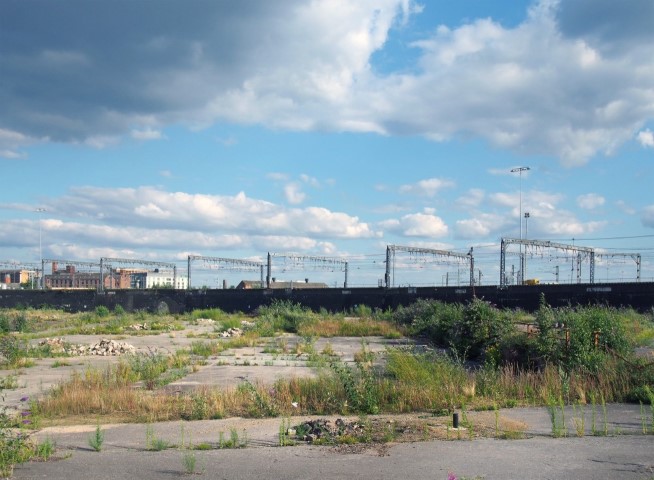What is a Phase I Environmental Site Assessment?
A Phase I Environmental Site Assessment (ESA) represents the foundation of any responsible brownfield redevelopment project and provides legal protections for environmental liability, which is important for any landowner. The site assessment seeks to discover contaminants, hazardous substances or pollutants that may threaten site environmental health and community public health. By analyzing historical and contemporary site documentation, the assessment can identify potential areas of environmental concern.
Beyond its forensic purpose, though, a Phase I Environmental Site Assessment helps establish who is responsible for the environmental contamination. If remediation is required, the assessment can also include a project cleanup plan.
A Phase I Environmental Site Assessment marks a significant milestone for any brownfield restoration project. As such, municipalities should partner with an experienced, expert team to ensure this fundamental step in any brownfield restoration project is conducted effectively and efficiently.
When do you need a Phase I Environmental Site Assessment?
The Environmental Protection Agency (EPA) says a Phase I Environmental Site Assessment should be performed whenever potential site contamination is suspected. In practice, however, it is prudent to assume any site can harbor contaminants from any stage of its commercial or industrial historical use.
Assessments often are performed at the beginning of brownfield redevelopment projects that seek to transform abandoned or deteriorated commercial or industrial sites into functional properties that enhance the surrounding community. Municipalities, at times, accept donated property. It is important a Phase I ESA is completed prior to accepting the donation to ensure there is not a problem. Also, if a municipality is granted EPA Assessment funds, site eligibility requires a completed Phase I ESA before taking title.
What happens during a Phase I Environmental Site Assessment?
Although Phase I Environmental Site Assessments often are tailored to suit the site's unique location, most assessments share several key steps:
- Historical and environmental records review.
- Site inspection.
- Report of potential surrounding source locations.
- Interviews with former owners and people with specific area and site knowledge.
Each of these steps may reveal critical information affecting the site's restoration plan.
Historical and environmental records review
Municipal records, including aerial photographs, Sanborn Fire Insurance maps, city directories, and other documents detailing land use, can be valuable assets during the review.
By consulting these materials and understanding the environmental practices of prior eras, experts can readily identify contaminants potentially used on-site. Prohibited pesticides like dichloro-diphenyl-trichloroethane, or DDT, for example, may not be mentioned explicitly but could be expected on a site if a particular farming practice historically was followed.
Site inspection
Trained inspectors explore sites for evidence of previous uses and the potential contaminants those uses may imply. Environmental scientists may conduct soil and water tests on-site or remove samples of soil, groundwater, vapor, surface water and sediments for further examination in the lab.
Sampling is necessary when a Phase I Environmental Site Assessment identifies Recognized Environmental Conditions (RECs) and emerging contaminants of concern that warrant further investigation. This follow-up investigation is often referred to as Phase II ESA.
Report of potential surrounding source locations
No site is an island. For this reason, a Phase 1 Environmental Site Assessment also considers the surrounding environment. Sources of surface and groundwater, the potential for airborne contaminants and the site's zoning history contribute to a more comprehensive understanding of the site's historical and present environmental impact.
Interviews with former owners and area experts
In this step, the assessment leverages community intellectual assets for a more nuanced understanding of the site. Interviewers may speak to previous owners or employees to better understand the site history. Likewise, area locals with an intimate knowledge of the site and its surroundings can provide further insights.
Knowledge gathered during this stage of the assessment presents a rich site history. The information aggregated through interviews and observation is then collated and analyzed by an expert team to determine potential threats and whether the project should proceed.
Partner with professionals for a Phase I Environmental Site Assessment
Partnering with the right environmental engineering team to conduct a Phase 1 Environmental Site Assessment can help municipalities reduce project costs, secure available grant funding and navigate the project through municipal, state and federal regulations. The EPA awards assessment grants each year to cover costs associated with assessment and cleanup. An experienced consultant can guide you through the application process and ensure that your project is a strong contender for the available awards.
Successful brownfield restorations rely on strong partnerships. If your municipality is embarking on a brownfield restoration project, contact the experts at Fehr Graham to determine when a Phase I Environmental Site Assessment is required.
Fehr Graham offers premier engineering, environmental and funding solutions that can safely and successfully guide you through an Environmental Site Assessment. Contact Us to learn more about our services, or give us a call at 815.394.4700.
Collaborative, Insightful, Results-Driven Solutions
Fehr Graham provides innovative engineering and environmental solutions to help improve the lives and communities of our customers.


